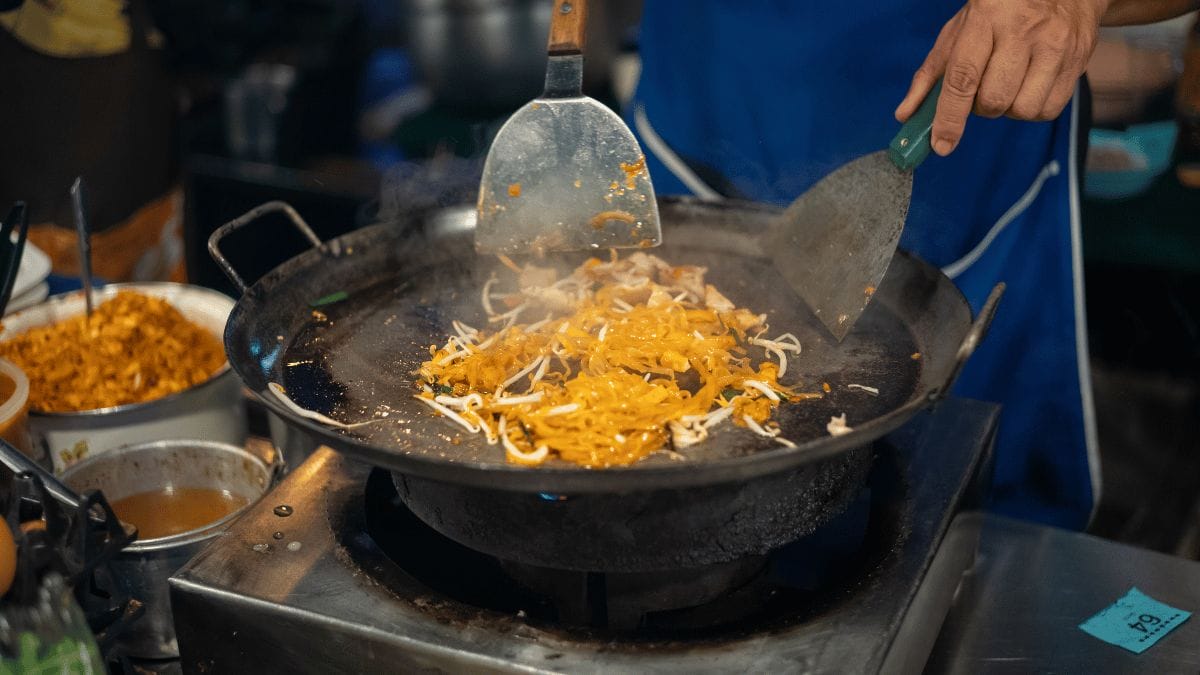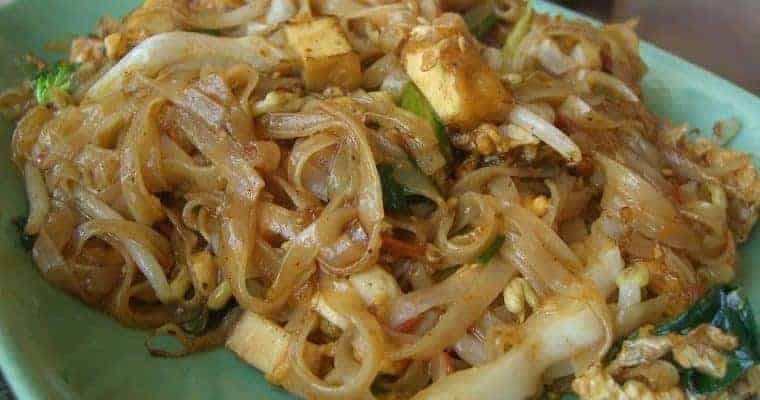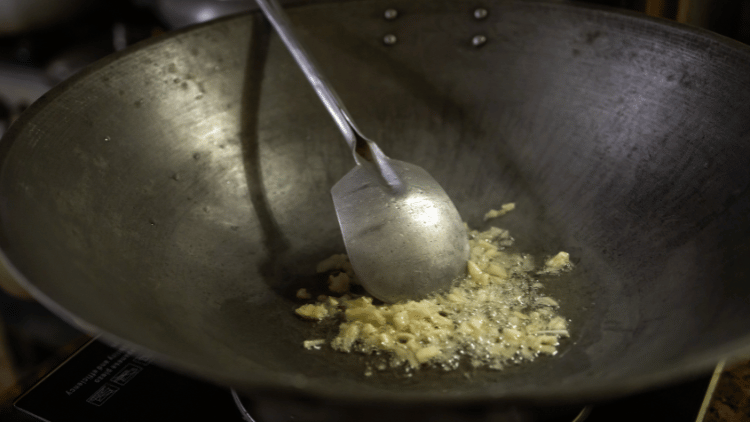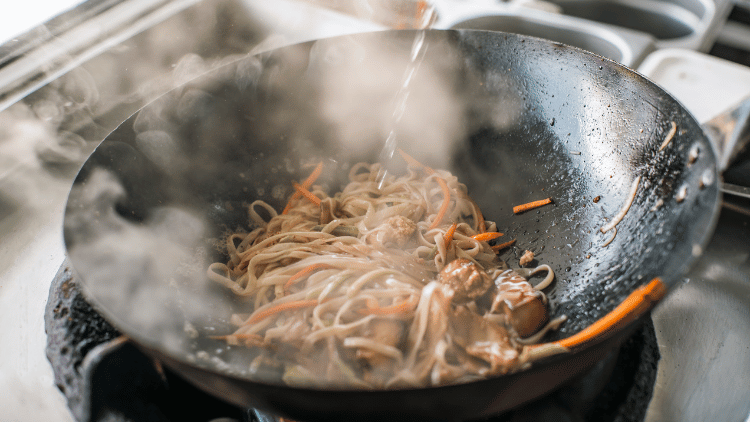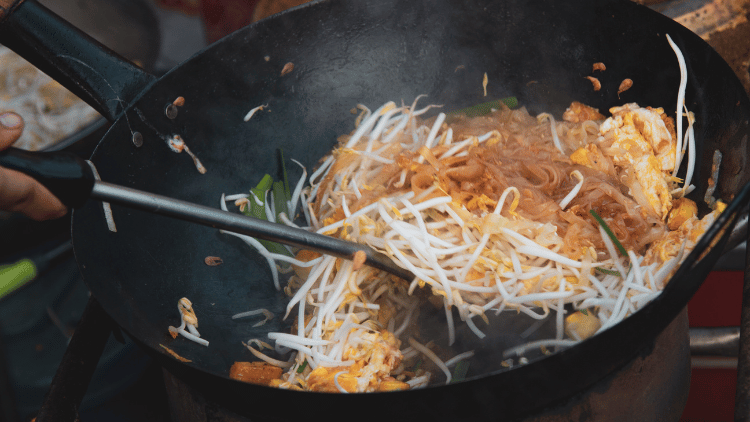When it comes to Thai cuisine, one dish that has gained international popularity is “Pad Thai.” This delicious street food has become a favorite among food lovers around the world. In this article, we will take a closer look at the history and ingredients of Pad Thai.
The History of Pad Thai
Pad Thai, also known as Phad Thai, is a stir-fried noodle dish that originated in Thailand in the 1930s. It is believed to have been introduced during a time when the Thai government was promoting nationalism and a sense of Thai identity. Pad Thai was created as a national dish to showcase the country’s unique flavors and ingredients.
The dish was influenced by Chinese and Vietnamese cuisine, as well as Thai street food culture. It was originally made with rice noodles, shrimp, tofu, bean sprouts, and various spices. Over time, different variations of Pad Thai have emerged, with some including chicken, beef, or even vegetarian options.
Pad Thai is a true taste of Thailand and an immensely popular dish with both locals and tourists alike.
This version of the famous Pad Thai recipe, I hope, will provide a totally authentic experience and will reunite you with the taste sensations of those Hawker stands of Bangkok. Each Hawker obviously believe their Pad Thai to be the best and bring to the recipe their own culinary flair, their own favored flavors and therefore each plate of Pad Thai is unique!
This version, and I do believe a firm contender, comes from the testing and tasting of many, many,…many… different variations from the food carts scattered across the city. We have done the research. All on your behalf 🙂 … It is no hardship.

Pad Thai – Taste Of Thailand
Pad Thai, I believe is Thailand’s ultimate street food. It is an internationally recognized and loved South East Asian dish very much like Nasi Lemak or Char Kway Teow from the streets of Malaysia and almost as well known as the Chow Mein of Chinese cuisine.
To some people “street food” may not sound desirable. However I guarantee those food cart cooks stir up dishes worthy of the best restaurant menus.
If you have been to Asia you will remember food stalls on every corner. It therefore stands to reason that with so many stalls and consumer choice, these cooks need to be good to be competitive if they are to remain in business. Usually this means they become specialist chefs of one or two dishes such as Pad Thai or Pad Kra Pao Gai.
Many of these street side cooks have been cooking the same one or two dishes day after day. Many year after year and often generation after generation … they are therefore constantly perfecting it.
What Makes A Great Pad Thai?
To truly achieve Pad Thai excellence is to ensure a dish that is dry and light bodied. It has fresh balanced layers of flavor.
The final dish should have a pale, almost translucent red/brown color. Unlike the many Western variations Pad Thai should be neither vivid red nor oil soaked
The many ingredients, when first considered, could potentially put people off making this dish at home. Do not be intimidated. Many are optional. I recommend using them all if you want to create a truly authentic dish.
Simply work your way through the recipe steps and in no time you’ll be enjoying the exquisite tastes of Thailand.
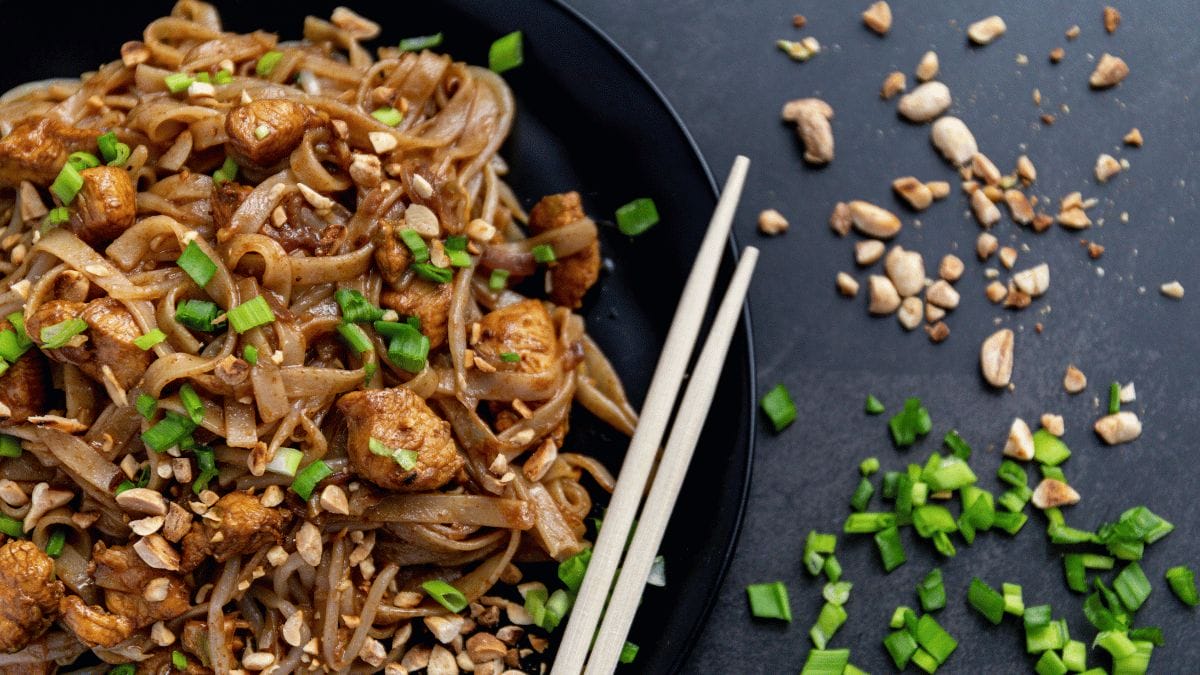
The Ingredients of Pad Thai
Pad Thai is known for its vibrant flavors and a combination of sweet, sour, and savory tastes. Let’s take a closer look at the key ingredients that make up this delicious street food:
1. Rice Noodles
The base of Pad Thai is made with rice noodles, which are flat and wide. These noodles are soaked in water until they become soft and then stir-fried with the other ingredients. Rice noodles give Pad Thai its distinctive chewy texture.
2. Protein
Traditionally, Pad Thai is made with shrimp, but other proteins such as chicken, beef, or tofu can also be used. The protein is cooked separately and then added to the stir-fried noodles. This adds a rich and savory element to the dish.
3. Tamarind Paste
Tamarind paste is a key ingredient in Pad Thai, providing the dish with its tangy and slightly sweet flavor. It is made from the pulp of the tamarind fruit and adds a unique depth of taste to the dish.
4. Fish Sauce
Fish sauce is a staple in Thai cuisine and is used in many dishes, including Pad Thai. It is made from fermented fish and adds a salty and umami flavor to the dish. Fish sauce is a crucial ingredient in creating the authentic taste of Pad Thai.
5. Bean Sprouts
Bean sprouts are commonly used in Pad Thai to add a crunchy texture and freshness to the dish. They are added towards the end of the cooking process to retain their crispiness.
6. Peanuts
Peanuts are often sprinkled on top of Pad Thai to add a nutty flavor and a satisfying crunch. They provide a contrast in texture and enhance the overall taste of the dish.
7. Lime
Pad Thai is often served with a wedge of lime on the side. Squeezing fresh lime juice over the dish just before eating adds a refreshing citrusy flavor and balances the other flavors.
